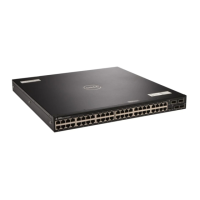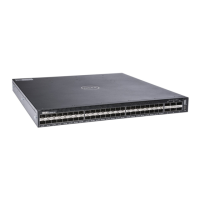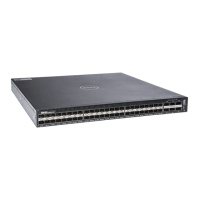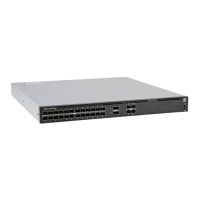• Creating a Virtual Stack Unit on an S-Series Stack
• Displaying Information about an S-Series Stack
• Influencing Management Unit Selection on an S-Series Stack
• Managing Redundancy on an S-Series Stack
• Resetting a Unit on an S-Series Stack
• Recover from Stack Link Flaps
Assigning Unit Numbers to Units in an S-Series Stack
Each unit in the stack has a stack number that is either assigned by you or Dell Networking OS.
Units are numbered from 0 to 11, however, you can only stack six S4820T units.Stack numbers are stored
in NVRAM and are preserved upon reload.
• Assign a stack-number to a unit.
EXEC Privilege mode
stack-unit renumber
Renumbering the stack manager triggers the whole stack to reload, as shown in the message below.
When the stack comes back online, the master unit remains the management unit.
Renumbering master unit will reload the stack.
WARNING: Interface configuration for current unit will be lost!
Proceed to renumber [confirm yes/no]: yes
Creating a Virtual Stack Unit on an S-Series Stack
Use virtual stack units to configure ports on the stack before adding a new unit.
• Create a virtual stack unit.
CONFIGURATION mode
stack-unit provision
Displaying Information about an S-Series Stack
To display information about the S-Series stack, use the following command.
• Display for stack-identity, status, and hardware information on every unit in a stack.
EXEC Privilege mode
show system
Refer to the following example.
• Display most of the information in show system, but in a more convenient tabular form.
EXEC Privilege mode
show system brief
Refer to the following example.
Stacking
969
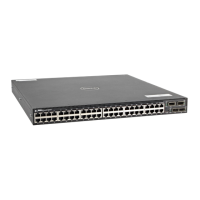
